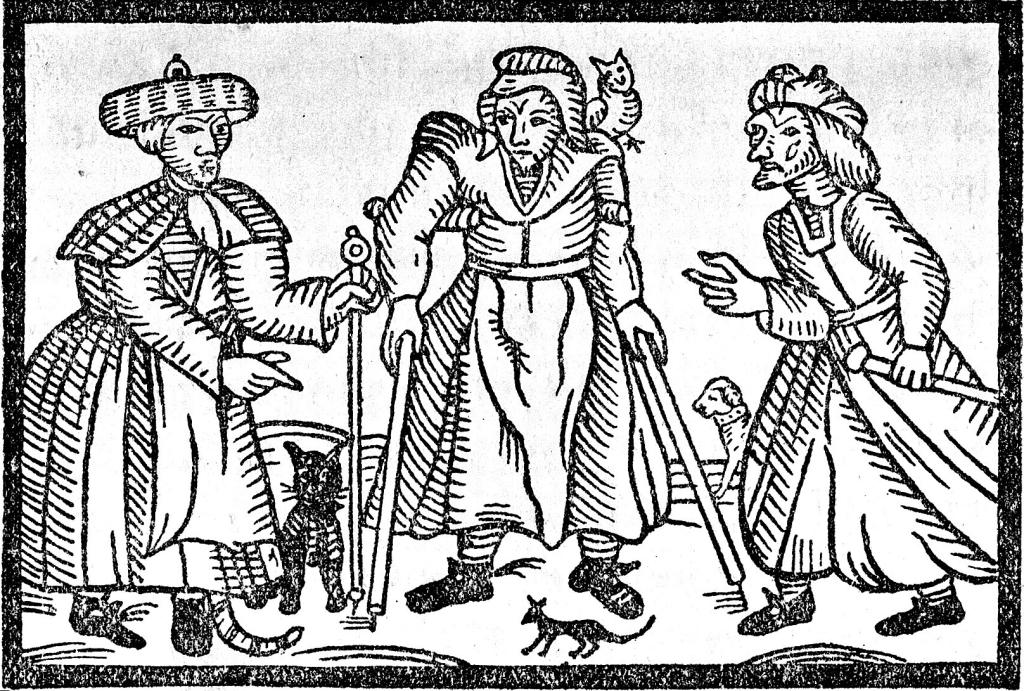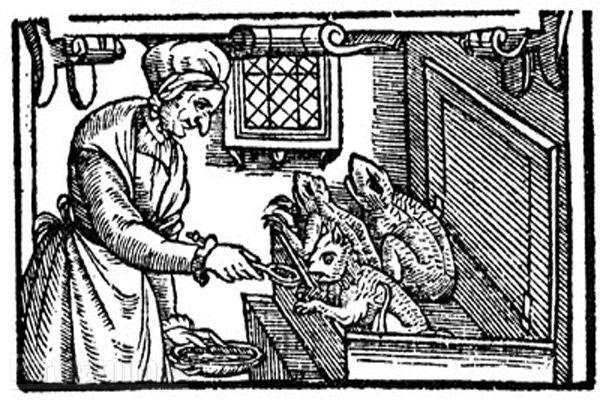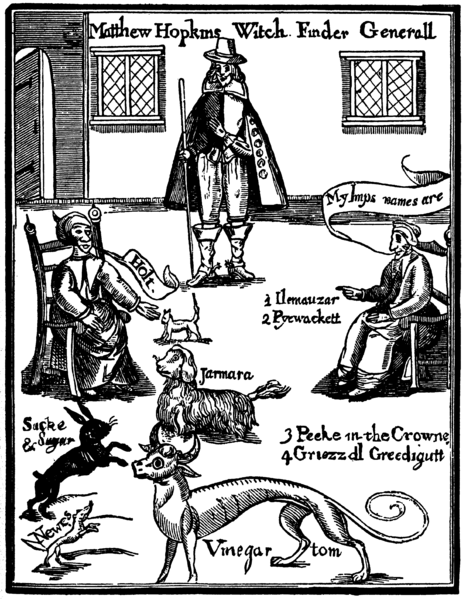Familiar spirits and devilish imps
Owning familiars, or supernatural spirits, was common among accused witches in England, from Margaret Ley of Liverpool to some of the more famously accused witches of history. But what forms could a familiar take, and how were they used?

Lead image: The Devil in Britain and America, 1896. Credit: Wellcome Collection. Attribution 4.0 International (CC BY 4.0)
In the history of the witch trials, which saw hundreds of women, men and children across England accused of witchcraft related crimes during the 16th and 17th centuries, Liverpool emerges relatively unscathed. It is impossible, of course, to know what whispered gossip went on behind closed doors, never making it to the official record. One case of Liverpool witchcraft that did make the light of day however concerns Margaret Loy or Ley, and her sister, known as Widow Bridge.
In 1667, Margaret found herself before the authorities accused of witchcraft. She confessed to having been a witch for thirty years since her mother died, before relating a startling tale. When her mother had died, there was precious little to pass on to her daughters: with no wealth or belongings of note, instead she bequeathed to them her familiars. Margaret and her sister had accepted this unusual inheritance, and they had been in possession of the creatures ever since.
What happened to Margaret and Widow Bridge after Margaret made her confession is unclear. Although talk of spirits and witchcraft sound fantastical to our modern minds, confessing to owning a familiar was very common among accused witches in England, and the historical record is rife with tales of what these imps got up to. There is no hint of what form these spirits took in the Liverpool case, but from the evidence of confessions elsewhere, it is possible to deduce various options.
Familiars, according to those who confessed often came to the witch in the form of an animal. The obvious choice was of course the cat, a creature long associated with witches and witchcraft. Agnes Waterhouse, the first woman to be executed in England for witchcraft in 1566, confessed to owning a cat named Satan that she had been given by her sister. This aptly – or perhaps rashly – named feline was used to kill and injure several people, along with bringing misfortune to those who incurred Agnes’ displeasure.

A witch feeding her familiar. Unknown author, Public domain, via Wikimedia Commons
Ferrets were another popular choice. In the St, Osyth Trials in Essex in 1582, Ursula Kempe accused Elizabeth Bennett of keeping a ferret shaped spirit in a pot. This spirit had been used to bewitch both people and cattle, causing death to several people. Alice Hunt, another St. Osyth resident also kept a ferret in a pot: this creature had killed six animals belonging to a man named Hayward. Alice had reputedly rewarded this fine work by giving the spirit some blood to suck. The Edmonton Witch, Elizabeth Sawyer was accused of having white ferrets in her house in 1621, but she denied that they were imps.
Mice and rats likewise appeared in the confessions of accused witches as they related their crimes to their questioners. In 1645, Elizabeth Harris of Faversham, Kent, confessed that the Devil had visited her nineteen years ago in mouse form. He had promised to help her carry out revenge upon her enemies. Sure enough, a man who had accused her of stealing a pig fell ill and wasted away until he died. The mouse used Elizabeth’s blood to write the covenant between her and the Devil himself. Anne Cade from Great Holland confessed to having three mice familiars her mother had given her: their names were James, Prickeare and Robyn. She used them to kill and harm her enemies.
James Device, one of the infamous Pendle Witches, confessed to having been visited by a familiar named Dandy, who came in the form of a dog. Dandy asked for his soul in exchange for having revenge on anyone he chose. His grandmother, Demdike, was visited by her familiar Tibb in the shape of a dog, who sucked blood from her. The previously mentioned Elizabeth Sawyer was also said to have a dog familiar. He was called Tom and visited her as either a large black dog, or a small white one. Tom sucked her blood for a quarter of an hour, but according to Elizabeth this caused her no pain.
Perhaps one of the strangest familiars on record comes from across the border into Wales. In 1591, the local bailiff got more than he bargained for when he decided to put Gwen’s powers to the test. When he arrived at her home demanding refreshments, things took a nasty turn when Gwen was manhandled by one of his party. When the drink was produced however, Gwen had the last laugh – there was a large fly floating in the jug, and however hard the men, tried it couldn’t be removed. The fly was so large and behaved in such a strange way in fact that the men were certain this was no ordinary fly, but was in fact Gwen’s familiar. This seemed to be confirmed when the man who pushed Gwen discovered his arm broken – the very one used to push her - and the bailiff’s own wife was rendered unable to move her limbs.

Matthew Hopkins, Witchfinder General. Unknown author, Public domain, via Wikimedia Commons
Another unusual familiar form was recorded on 25 September 1645, when Jane Holt, a widow of Faversham, confessed to being a witch. Jane related how for the last twenty years a creature that resembled a hedgehog had visited her a couple of times a month. It sucked at her, causing her pain. Curiously, the creature was not prickly like a hedgehog however: when she pushed it away, it felt soft like a cat.
Shape shifting was not unheard of where familiars were concerned. Satan the cat for instance, after consultation with his impoverished mistress, was turned into a toad so that Agnes could sell the wool that the familiar lay on. This same spirit was also seen in the form of a dog, terrorising young Agnes Browne and threatening to kill her.
The naming of such spirits varied as much as the forms they took. Self-styled Witchfinder General Matthew Hopkins used the naming of familiars as proof of their existence: citing such names as Pyewacket, Grizzel Greedigut and Vinegar Tom, he concluded that no mortal could have invented them. Others however were more mundane, going by names such as John or Nan.
